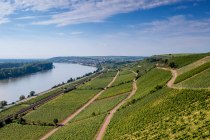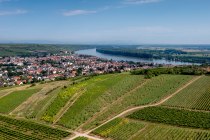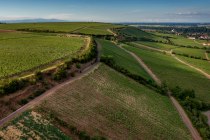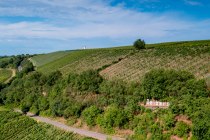Winery St. Antony
St. Antony owns a treasure trove of vineyards, from which we get the best possible result year after year through intensive, loving cultivation. This is controlled ecologically, with great respect for nature and soil. The largest part of the vineyard treasure is on the Red Slope - a magnificent, red and original rock formation right beside the Rhine. This type of soil is very rare and requires a lot of man and vine, because the vineyards are barren, steep and full of red slate. The Riesling loves the red slate. The red soil gives the wines their mineral soul and the exciting fruit. And one thing the living Rieslings from the steep red slopes have in common, the digestible mild acid that many of our customers love about our wines. In addition to the Rieslings, we also grow Pinot Blanc, Chardonnay, Pinot Noir and Blaufränkisch.
















